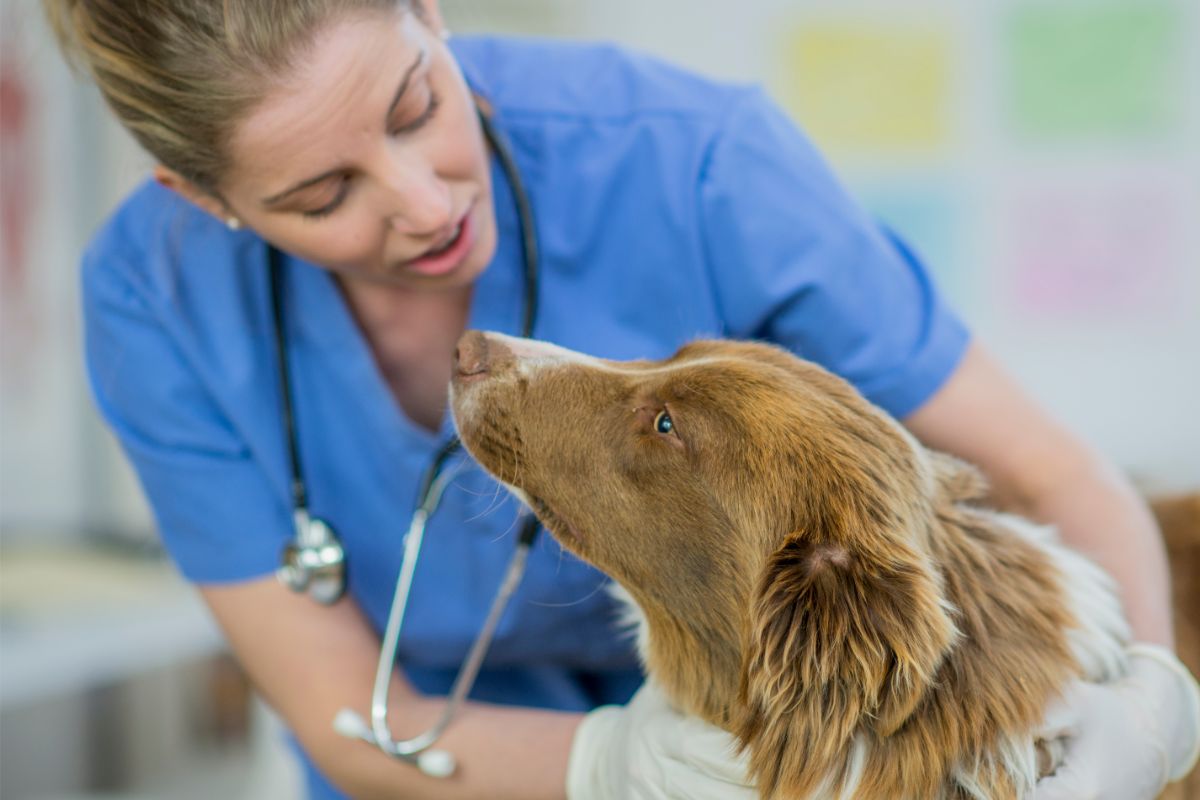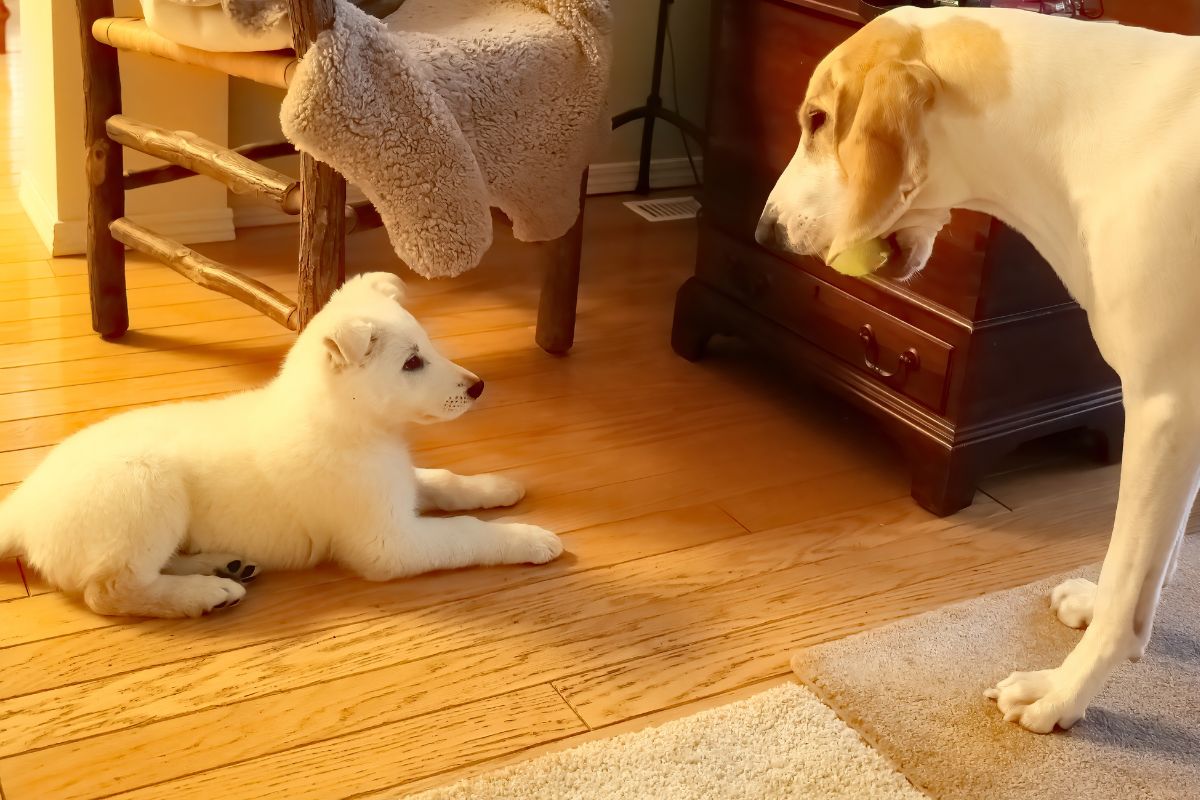Recall is arguably one of the most challenging aspects of training a dog.
You think that once you have nailed sleep training, potty training, and obedience training, you’re out of the woods. But, recall is so hard to train, and it takes a lot of time, effort, patience, practice, and consistency.
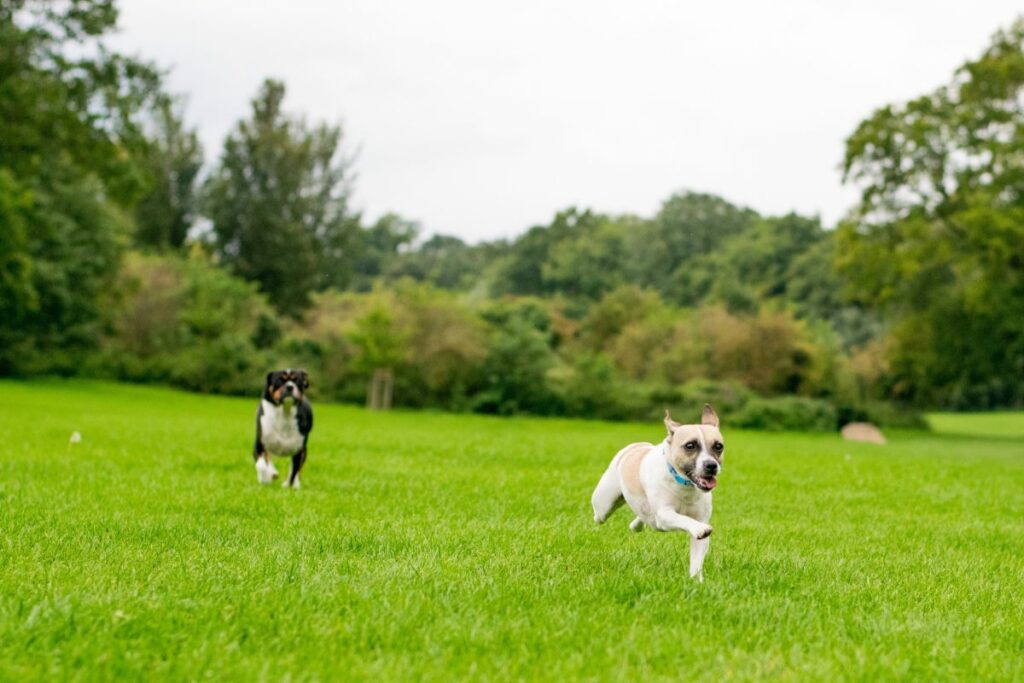
Ensuring that you can recall your dog back to you is a vital part of being a dog owner. It keeps your dog safe in all situations, and there is nothing worse than calling your dog and it ignores you in front of everyone at the dog park!
If your dog doesn’t come back when called, ignores you, or looks at you and goes back to what it was doing, then you definitely need to work on your recall.
It is essential that you train your dog to come back to you. Don’t worry – we will show you how and why you should in this guide!
Why Recall Training Is Important
Recall training is crucial for all dog owners and dogs. It ensures that your dog can come back to you whenever you call for their safety and your own.
For instance, if there are any wild animals in your area, or lots of traffic nearby, you will need to keep your dog safe at all times. Good recall is also essential if you want to let your dog off the lead in a public place.
In addition, if you take your dog to dog parks or public spaces, you have to be able to call them back and gain their attention. If not, they could run off and get into all kinds of trouble, or interact with dogs that are not friendly or not comfortable around other dogs.
Recall training is part of being a responsible dog owner. But don’t feel bad- it takes a lot of practice, and the majority of dogs don’t have great recall naturally. It’s a work in progress.
Why Your Dog Won’t Come When Called
If you have tried training your dog in public before, and it refuses to come back when called, then it is time to go back to basics. But first, let’s uncover some of the reasons that your dog is ignoring your calls. This could be for a number of reasons, so we will outline them below!
Your Dog Associates Being Called With Punishment
One of the primary reasons that your dog may not come when called is because they associate it with punishment. For instance, if you have called your dog back to you before, and then punished them for doing something wrong, then they may associate coming back to you with negativity.
This is why it is so important that even if you have called your dog 100 times and they finally came back, you should not punish them. This creates a negative connection between returning to you and being punished or chastised.
So, if you are tempted to punish, spank, yell, or do anything unpleasant towards your dog because of slow or non-existent recall, then this will actually make it harder for you. This can also damage your relationship and bond with your dog.
It’s not just about physical punishment or verbal punishment (which we never recommend). If you only ever recall your dog to stop them from doing something that they consider fun, then they will see it as a negative thing.
For instance, if you only ever call your dog when they are playing with another dog, or sniffing something exciting, then they will avoid coming back to you next time, as what they are doing is far more interesting.
This is why we always argue that positive reinforcement and positive training methods are far more effective than negative reinforcement. It is easier to teach your dog what good behavior is, than what bad behavior is.
Your Dog Is Not Receiving Rewards
In a similar way, if you are not rewarding your dog or reinforcing good behavior, then your dog may ignore you and not bother to come back when called. Without a reward, there is no motivator to come back to you.
Think of it this way- if there is a particularly interesting smell or object across the way, that is far more interesting than you – who is standing there empty-handed. For successful recall, you have to reward your dog every time it comes to you when called.
However, patting your dog and saying ‘good boy’ will not be enough for recall training. You have to use something that will gain their attention. For most dogs, the best results will come with high-value, tasty treats. If you have something absolutely delicious, then your dog will definitely come back for it.
If your dog is not very food motivated, then you will need to use their favorite toy or a teaser pole. These toys can really attract a toy-driven dog or one with a high prey drive.
You have to reward your dog every single time that they come back to you to teach them that coming when called results in a delicious snack.
Your Dog Is Not Up To The Challenge
Recall has to be done slowly and with baby steps. You have to complete the groundwork before taking it further. This involves starting at home, with limited distractions and interruptions, and working up to outdoor environments, or places where there are other dogs and people.
Once your dog manages to come back to you successfully in certain environments, then you can move onwards and upwards as your dog becomes more proficient!
You Repeat Yourself Too Much (Lost Value)
Even if you work really hard on training your dog to come back to you, if you practice too often and repeat yourself too much, your dog may tune you out. Saying ‘Puppy, Come’ repeatedly will actually make your dog tune you out and the recall will lose its value.
If it is not working out, put your dog back on a leash, and try again at another time.
You should also keep in mind that your dog will have good days and bad days. Sometimes, your dog’s recall will be excellent in certain circumstances, and other days, there may be way too many distractions or scents for your dog to focus properly.
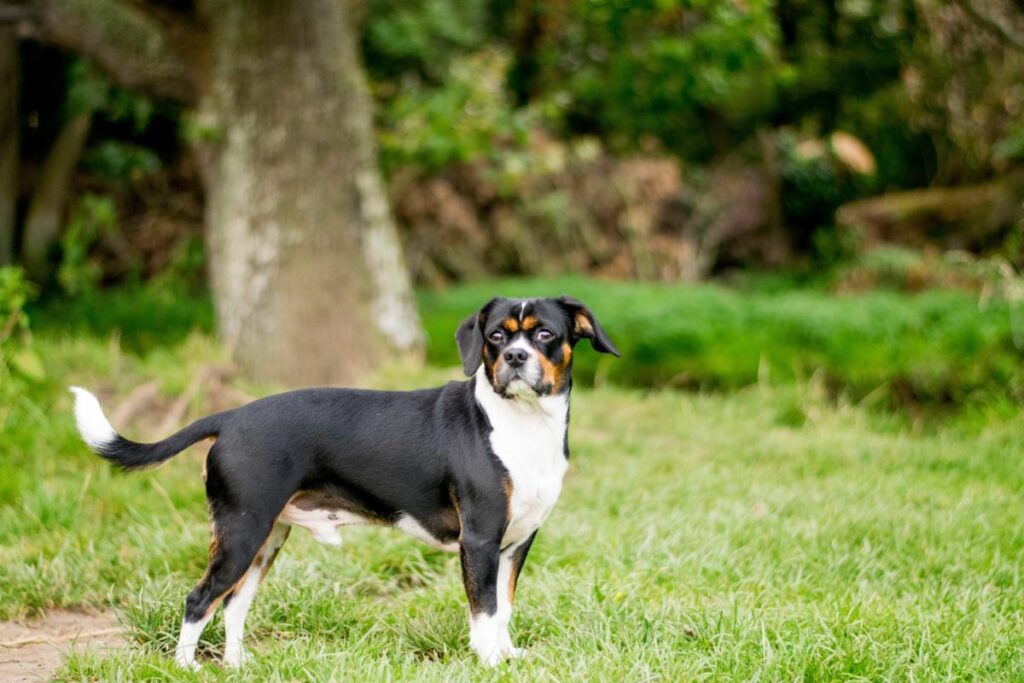
Teaching Your Dog To Come: Tips
With the basics fresh in your mind, let’s take a look at how you can start training your dog to come to you. As mentioned before, if your dog is ignoring you, then you need to go back to the basics. Forget how it is going so far, and start fresh!
Choose A New Command
To start anew, you need to pick a new command to use, as your methods up until now are not working! So, if you have been using ‘come’ so far, then your dog may already think that this means ‘come when you want to’ or ‘come when I repeat myself 10 times’.
If this is the case, then let’s pick a new word. We prefer to use short, quick commands as these seem to work best. Your best options are ‘Here’ ‘Back’ or ‘By Me’. But, you can use your own command or whatever you prefer.
Once you have decided on a new command, make sure that you let all members of your household know, or all those who help to take care of your dog know. This can keep things consistent.
If you want to, or if you are already in the habit, then you can still use ‘come’ or your previous word in some circumstances. However, it is best if you keep your primary recall command (the new one) as the word you use when you really mean it, and they have to come back.
You can use ‘come’ when you are walking and just want your dog to ‘come’ along with you. But use your new word when they have to recall back to you immediately.
Create A Positive Association
Now, positive reinforcement is one of the most vital skills you can implement as a dog owner. For recall training, you have to use high value rewards and treats. Some trainers will tell you to only use your dog’s kibble as treats to break up meals, but this simply won’t work all of the time.
Kibbles are not interesting enough for dogs to come back when called successfully. You should try using high-value treats that have real meat or protein in them such as doggy sausages (broken up), dried salmon treats (they smell great to dogs), or soft chicken training treats.
Don’t worry, if you are out of dog treats, you can always use shredded chicken or cheese as these also work really well.
We also recommend that you choose a reward that excites your dog, and only give it to them when you are practicing recall. This way, your dog will not get this delicious, tasty and exciting treat at any other time, making it even more coveted and special.
Get Started
Now, it is time to get started with your recall training. The first step is to call your dog by its name, followed by the new word.
Example: ‘Cooper, Here!’
We use the dog’s name to gain their attention, and when they make eye contact with you, you will say the new command.
The next step happens just after you say the command. When you say it, gesture and beckon your dog to come to you. Keep praising and encouraging until they come to you.
When your dog comes to you, bring your reward out, and give it to them immediately. Do not ask them to sit or lie down first, as they may think that the reward is for doing this action rather than coming back.
Repeat this up to five times, then take a break. If you keep at it for too long, your dog will lose interest. After a break, repeat the training method above. Then, have some fun and play with your dog to reward them for their hard work.
Don’t Repeat Yourself
Whenever you are practicing recall, you should not repeat yourself a lot. Instead, say it only once and use your body language and praise to encourage them to come to you. Don’t keep saying: ‘Here, come here, come on, here, here!’ Mixing up the words and saying too many phrases will just confuse your dog.
Use A High-Value Reward That Is Only Used For Recall
As mentioned, we cannot stress this enough – use a high-value reward if you want to encourage your canine companion to come to you. Do not use this reward for any other training or treats other than recall training.
Provide Lots Of Rewards But Keep Them Hidden
Have lots of rewards on hand, and ensure that your reward is hidden before being given. If you have a toy as a reward instead, then keep it behind your back and out of sight until you are rewarding your dog. The reward should be a surprise to reinforce the good behavior.
If the reward is not working, then you may have to increase the value of the reward, or eliminate any distractions.
Implementing Your Training
You may be excited to get started with your training, but you do not want to do too much too fast. You have to start out slow and start working up to more challenging situations. It is best to start in a controlled environment such as in your home, before moving on to your backyard and outdoors.
Starting off indoors can help build up a positive association with calling them and having treats as a reward.
Start Indoors
Now, in a quiet space inside, where you can limit distractions and interruptions, you can get started. Get your high-value rewards ready, and hide them somewhere your dog will not see them. If you have been shredding chicken or cheese to use as a reward, then it is likely that you have already gained your dog’s attention.
If so, then wait for them to become distracted by something else or for them to get bored. Then, when your dog is distracted or has wandered away, but is in the same room, you can start.
Say your dog’s name, followed by the recall word. Encourage your dog to come towards you. If your dog comes straight away, then this is perfect! Reward and praise them when they arrive.
If your dog does not come straight away, then do not worry or lose hope. Do not repeat the word, but keep encouraging them and gesturing to them to come towards you. When they finally arrive, still reward and praise them. Do not chastise them or ignore them.
If they do not come at first, then the positive association is not quite made yet. Just keep at it, and keep practicing. Soon enough, your dog will start to realize that coming to you results in a reward.
Move Out Of Sight
Once you have nailed the steps above, it is time to try calling your dog when you are out of sight. This can sometimes be easier, as some dogs like to be near their owners. So, move to another room nearby.
Call your dog to you, and reward and praise just the same as before. Practice this a few times until your dog successfully comes the majority of the time (we understand dogs aren’t always perfect).
Try Training Outside
The next step is to start training outside. This can be slightly more challenging, as the outdoors has lots of scents, sounds, and distractions for your dog. So, don’t start at your favorite dog walking spot or dog park.
Start in your backyard or an enclosed space where you can be alone. Then, when your dog is mildly distracted, such as sniffing the grass or wandering around, call them back to you.
Repeat the process and reward and praise your dog every time they return. When they can do this successfully, move on to the next step.
Include Distractions
Now, try having mild distractions. Try having another person stand in the backyard as a distraction and repeat the process. Call your dog back to you and praise and reward.
Just keep in mind that doing this outdoors can be more difficult. Dogs love all of the scents and things around them when outside, so you may not be the most interesting thing to them. Keep at it, and ensure that they check in with you.
Practice & Consistency
As your dog’s recall improves, you can try in more distracting environments. As your confidence in your dog increases, you can try implementing recall on walks and in quiet environments.
Only when you have practiced often and you are confident in your dog’s ability to come back to you should you let your dog off a leash in public.
You can also use a long-line leash at first in public spaces to reinforce the behavior and keep practicing before you let your dog off a leash around others.
You have to remember that recall is a work in progress, and it will take a lot of time, practice, and consistency. Just trust us on this one, your dog will get there eventually!
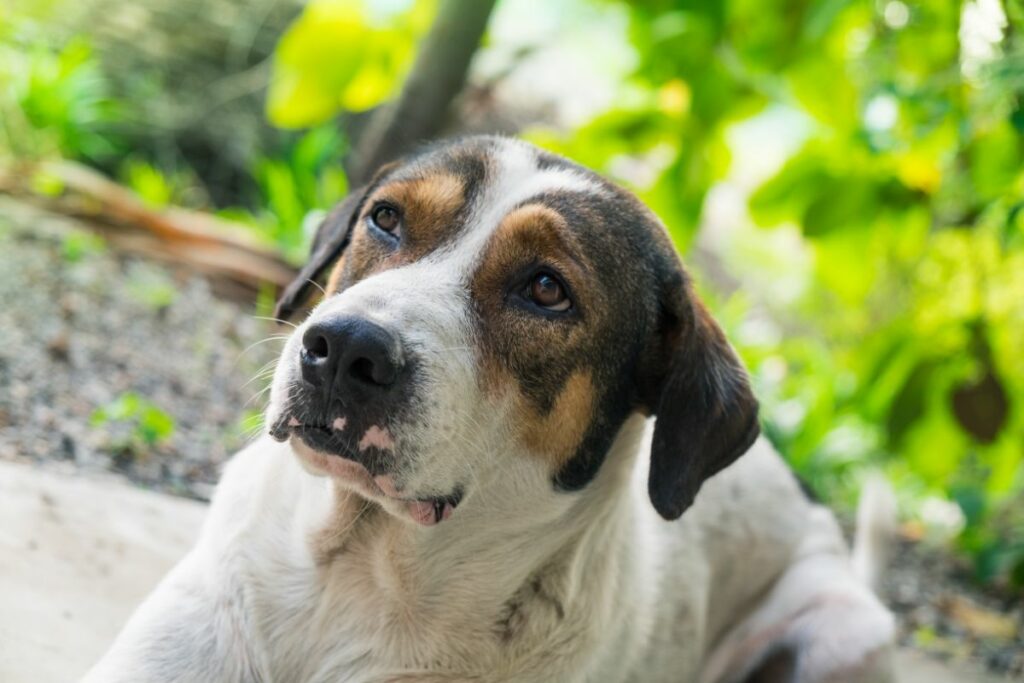
How Long Does Recall Take To Train?
Recall is something that you really have to work on for a while with your dog. Once you start training this, you should not leave long gaps between training sessions. Keep doing it every time you are out with your dog, even if it is just for five minutes.
Then, you need to be consistent with your training and keep at it. On average, getting to a stage where your dog has reliable recall can take anywhere between 3 to 6 months.
However, it can take longer for you to be completely comfortable and confident with your dog’s recall abilities.
Final Thoughts
To summarize, recall training is one of the most crucial elements of being a dog owner. You have to be able to control your dog and call them back to you to keep them and others safe.
If your dog is ignoring your calls, then this could be for a number of reasons.
It could be that they have had a negative experience and association with your calls, or that you do not have rewards that are high value or interesting to them.
With this guide, you can start to uncover why your training is not going so well, and what you both can do to improve.
Recall can actually be a bit of a challenge to get through, but with enough patience, practice, and consistency, you can really see some results.
- How To Teach Your Puppy Their Name Easily! - July 18, 2023
- Is Your Puppy Counter Surfing? Find Out How To Stop It! - July 18, 2023
- How To Train Your Puppy For Car Rides: Everything You Need To Know - July 18, 2023


